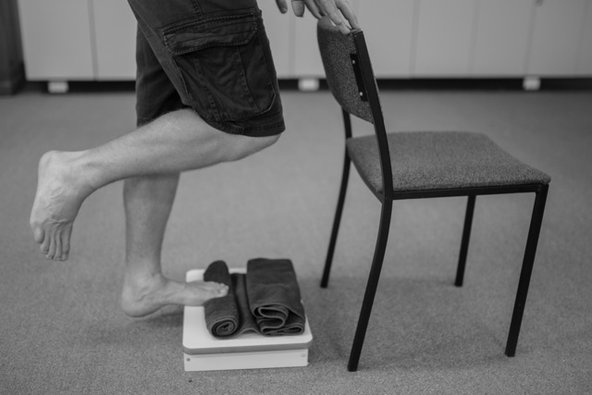Source: Press This!
All posts by Wayne
Jim Parsons in Act of God
https://www.youtube.com/watch?v=hCIanIvGK2I
Ask Well: Plantar Fasciitis Relief
If you have stairs or a sturdy box in your home, along with a backpack, timely relief for plantar fasciitis may be possible.
Source: Ask Well: Plantar Fasciitis Relief
Ask Well: Plantar Fasciitis Relief

Asked by Marilyn • 610 votes
A
If you have stairs or a sturdy box in your home and a backpack, timely relief for plantar fasciitis may be possible, according to a new study of low-tech treatments for the condition.
Plantar fasciitis, the heel pain caused by irritation of the connective tissue on the bottom of the foot, can be lingering and intractable. Arecent study of novice runners found that those who developed plantar fasciitis generally required at least five months to recover, and some remained sidelined for a year or more.
Until recently, first-line treatments involved stretching and anti-inflammatory painkillers such as ibuprofen or cortisone. But many scientists now believe that anti-inflammatories are unwarranted, because the condition involves little inflammation. Stretching is still commonly recommended.
But the new study, published in August in the Scandinavian Journal of Medicine & Science in Sports, finds that a single exercise could be even more effective. It requires standing barefoot on the affected leg on a stair or box, with a rolled-up towel resting beneath the toes of the sore foot and the heel extending over the edge of the stair or box. The unaffected leg should hang free, bent slightly at the knee.
Then slowly raise and lower the affected heel to a count of three seconds up, two seconds at the top and three seconds down. In the study, once participants could complete 12 repetitions fairly easily, volunteers donned a backpack stuffed with books to add weight. The volunteers performed eight to 12 repetitions of the exercise every other day.
Other volunteers completed a standard plantar fasciitis stretching regimen, in which they pulled their toes toward their shins 10 times, three times a day.
After three months, those in the exercise group reported vast improvements. Their pain and disability had declined significantly.Those who did standard stretches, on the other hand, showed little improvement after three months, although, with a further nine months of stretching, most reported pain relief.
The upshot, said Michael Skovdal Rathleff, a researcher at Aalborg University in Denmark, who led the study, is that there was “a quicker reduction in pain” with the exercise program, and a reminder of how books, in unexpected ways, can help us heal.
backpacking food ideas | trail recipes | 5 Dinner Recipes For The Trail
A collection of hiking recipes and backpacking food ideas. Find quick and easy meal recipes for your next trail!
Source: backpacking food ideas | trail recipes | 5 Dinner Recipes For The Trail
Groovy-Biotic Cooking: Quick, Healthy Meals with an Ultralight Cook Kit @ Backpacking Light
Latest US news, world news, sports and opinion from the Guardian | theguardian.com | The Guardian
Latest US news, world news, sports, business, opinion, analysis and reviews from the Guardian, the world’s leading liberal voice
Source: Latest US news, world news, sports and opinion from the Guardian | theguardian.com | The Guardian
Prescription Riding Sunglasses – Rider | Motorcycle Sunglasses
Driving and motorcycle riding sunglasses with removable eye cups allowing for increased air flow or increased protection from wind and road debris.
Source: Prescription Riding Sunglasses – Rider | Motorcycle Sunglasses
Ultralight Backpacking Stove Guide | Section Hikers Backpacking Blog
Lightweight and ultralight backpackers have a lot of different options available when it comes to picking an ultralight backpacking and camping stove.
Source: Ultralight Backpacking Stove Guide | Section Hikers Backpacking Blog
